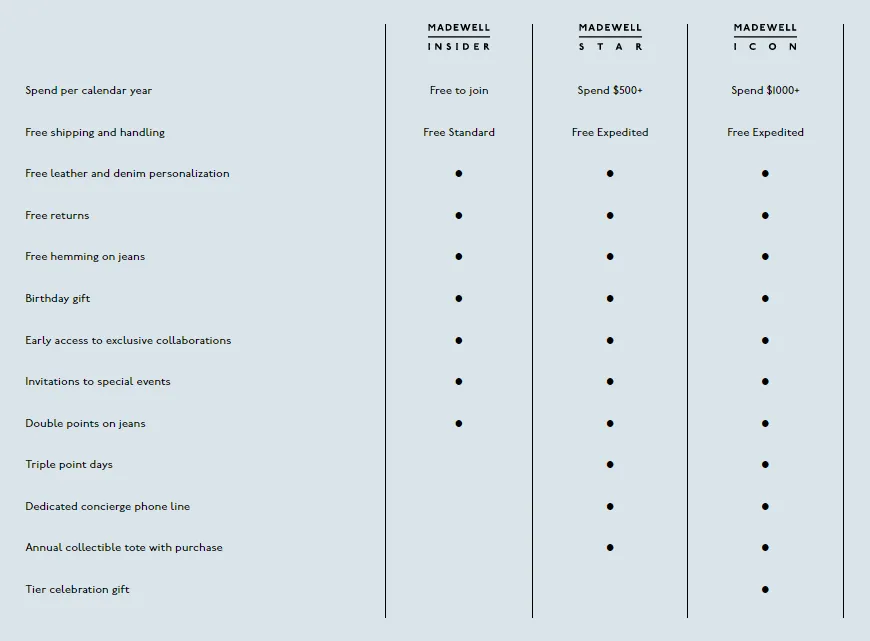
AI-powered delivery date estimates to boost conversion
Give shoppers peace of mind and protect and grow your bottom line
Personalized tracking experiences to build brand loyalty
Returns and exchanges management to mitigate fraud and reward best customers
Proactive communication to drive customer lifetime value
Delivery claim management to tackle fraud and build trust
The Ultimate Guide to Attracting Repeat Business
%20(37).webp)
Attracting repeat business is more cost effective than recruiting new customers. In fact, the cost to attract new customers is as much as 5X higher than the cost of retaining existing buyers. Unfortunately% of companies prioritize new customer acquisition while a mere 18% focus on retention. The bottom line?—Not only does focusing on attracting repeat business limit your reliance on new customer acquisition, it gives your ecommerce company a competitive advantage those that aren’t investing in retention. With all of that said, here's the biggest question of all: how do you actually get customers to return to your website and buy from you again...and again...and again? The Ultimate Guide to Attracting Repeat Business in retail was written to help you find the answer.
Provide customers with a positive experience
As an ecommerce retailer, there are many ways you can incentivize customers to make repeat purchases directly. However, nothing is as effective as the most simple suggestion of all: give people a great shopping experience if you want to boost retention.
Ask yourself the following questions:
- Does my website load quickly?
Not only is page speed a ranking factor for Google search results, but slow sites also frustrate consumers. By some estimates, even a one-second delay in page response can result in a 7% reduction in onsite conversions—not good news if you want to keep people happy and increase your revenue stream.
- Are my products described with total clarity?
Clear descriptions create confidence. If buyers aren’t confident your products will meet their needs, they’ll be less likely to purchase—whether they’re new buyers or repeat customers. Therefore, ensure your product detail pages are laden with helpful information and (where it makes sense) supercharged with augmented reality.
- Does my checkout flow require more steps than are necessary?
Think long and hard about every part of your checkout process. Are the individual steps to purchase spread out across more pages than necessary? Do you provide people with an option to check out without logging in or creating an account (e.g., guest checkout)? The more friction you minimize in the checkout process, the more successful you'll be in reducing last-minute shopping cart abandonment and retaining customers.
- Can my customers find the help and support they need with ease?
Making your customers jump through hoops in order to get their questions answered casts your brand in a negative light. With that in mind, examine your support options to get an objective perspective on possible frustrations your customers may face. Make sure people can answer common questions such as "where is my order?" without contacting your customer service department.
- Are my customers "always in the loop" when it comes to their order or return status?
Common practice today is to send an email (or SMS) to customers once an order has been placed and again once an order has been fulfilled (this time with package tracking information). Take it a step further by automating additional emails to be sent when the package is arriving that day, delivered, or delayed.
Attract repeat business with tiered loyalty programs
Turn your attention to specific programs and incentives designed to increase repeat sales.
As you do, keep in mind that not all customers are created equal. While any repeat business is valuable, customer retention programs should prioritize retaining top buyers according to average order value (AOV), lifetime value (LTV), number of referrals, or whatever other key performance indicators (KPIs) you track. (Remember the Pareto Principle as it relates to business—80% of your brand's profit will typically come from 20% of your overall customer pool.)
One way to do this is with a tiered loyalty program such as Madewell’s Insiders program—an excellent example of retention in practice.

Anyone can join the program’s base tier which offers basic benefits (free shipping, free returns, free leather personalization, etc.) to encourage loyalty and repeat sales. But for those customers who keep coming back and spending money, there's an even higher tier of rewards program with exclusive perks. As a result, the resources Madewell puts into incentivizing repeat business go directly to the customers that are most likely to generate a return on its investment.
Personalize your promotions
In addition to creating a tiered loyalty program, look for ways to be proactive in segmenting shoppers for personalized promotions based on their current activities and past purchase behaviors.
These efforts can either be manual or automated, depending on your ecommerce technology stack.
For example, during the holiday season, you can run a report to identify your top 10 customers based on total spend for the year. You can then reach out to each of them individually with a personalized "thank you" message and exclusive coupon code for their holiday purchases.
Personalization can also be carried out at scale using ecommerce automation. Many common marketing automation platforms allow you to perform activities such as:
- Triggering promotional emails and coupon codes to be sent when past customers visit your site again.
- Sending a post-purchase nurture sequence to keep your company top-of-mind when customers have a need for your products in the future.
- Using promotional emails or remarketing ads to recommend items that are related to customers’ past purchases (for example, other clothing or footwear items that can be styled with items customers bought previously).
Automate resupply reminders for consumable goods
Ecommerce businesses that sell consumable goods—such as food, beverages, razors, nutrition supplements, and beauty products—have a natural advantage when it comes to driving repeat business. As long as customers are happy with your company and your products, reordering from you once they’ve run out is an easy choice. Some consumable retailers drive repeat business through subscription programs that automatically charge customers and ship resupply orders on predetermined intervals.
If you don’t offer subscriptions, however, you can still use ecommerce automation to remind customers to reorder their items at the end of their expected usage windows.
For example, if you sell vitamins in a 30-day supply, email customers 25 days after their previous order to remind them to restock by reordering. If the usage window elapses, consider an automated reminder including a coupon code that’s specific to the product they purchased to encourage customers to buy again.
Create a customer-centric return process
One final option for encouraging repeat business that’s often overlooked by ecommerce merchants is the returns process. Returns are an inevitable part of ecommerce business but they’re also a powerful brand-building and customer retention opportunity.
According to Narvar’s State of Returns report, 77% of first-time shoppers who rated their returns experience positively—as either ‘easy’ or ‘very easy’—said they’d shop with the retailer again. That percentage jumps to 96% across first-time and repeat customers who rated their return experience positively.
Ultimately, consider your industry, products, and customer base before targeting individual shoppers with retention strategies. Don’t be afraid to get creative by testing new ideas as you discover them to determine the best ways to generate repeat sales from your ecommerce customers.























